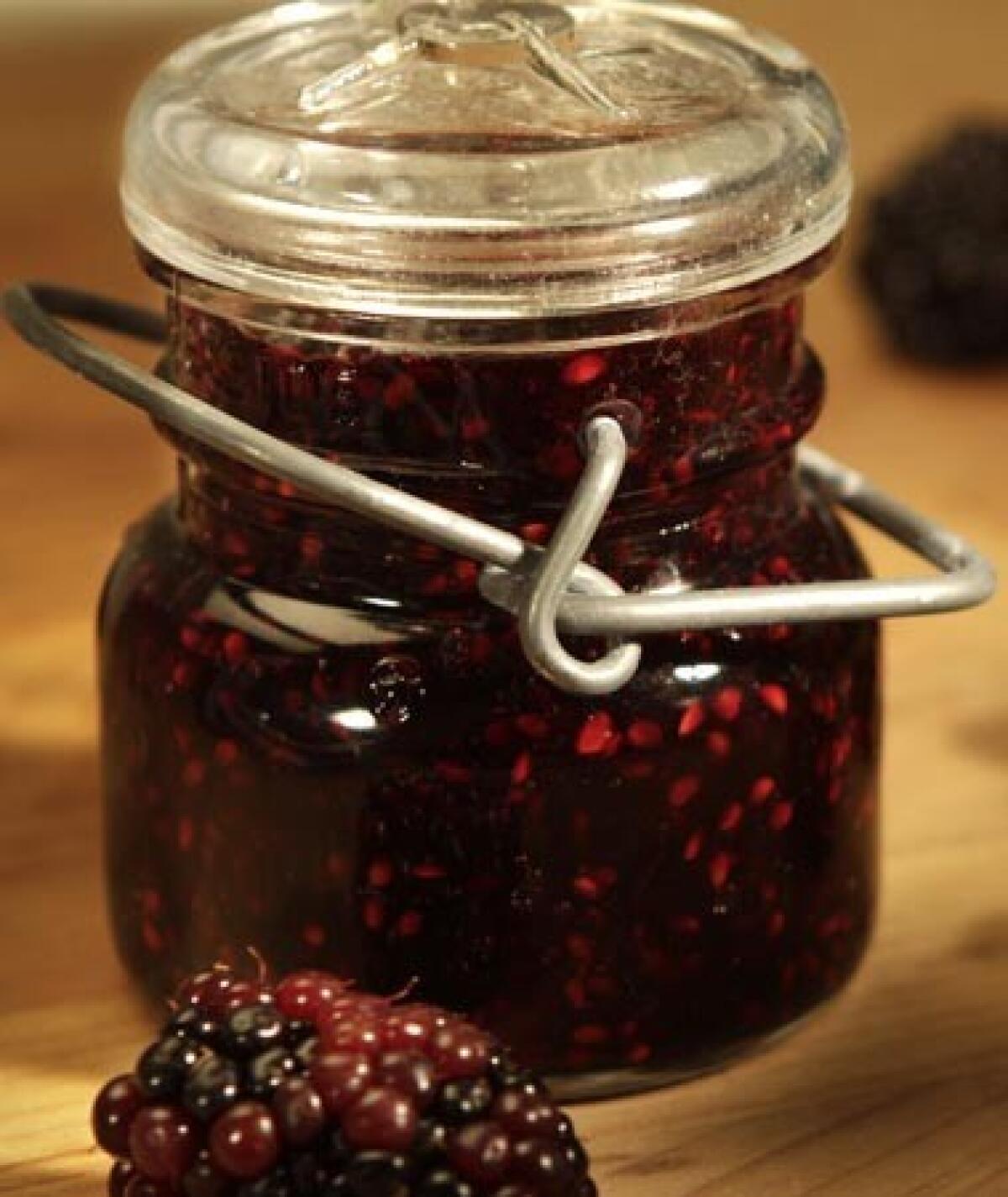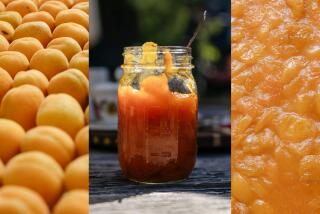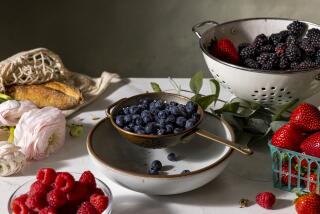Making jam: How to tell when itâs jelled; how to store it

For the most part, making jam couldnât be easier: Mix fruit and sugar, and cook. The only hard part is knowing when itâs done. Because hot jam doesnât show that itâs jelled as readily as it will after itâs cooled, this can be a little tricky. There are three main tests to tell if your jam has jelled.
Temperature: The fail-safe jell temperature is 8 degrees above the boiling temperature of water, or about 220 degrees for most of Southern California. But many jams are done slightly below that, at 216 to 217 degrees.
Cold saucer: Stick a saucer in the freezer when you start cooking. When you think the jam is done, spoon just a drop of the liquid onto the saucer and put it back in the freezer for a minute. If the jam sits up pertly and a wrinkly skin forms over the top, itâs done.
Sheeting: When the liquid runs off of the stirring spatula or spoon in sheets rather than in several individual points, the jam is set.
If all else fails, remove the pan from the heat and let it stand for a few minutes. If it starts to set around the edges, it is done. If not, return it to the heat for further cooking.
The other tricky part about making jam is canning it for long storage. One of the best guides is the Department of Agricultureâs âComplete Guide to Home Canning,â which can be found at the National Center for Home Food Preservation website. Another is from Ball, the canning jar company, at its website.
Jams made in small quantities can be stored in the refrigerator for up to several months without canning.
âRuss Parsons
More to Read
Eat your way across L.A.
Get our weekly Tasting Notes newsletter for reviews, news and more.
You may occasionally receive promotional content from the Los Angeles Times.









